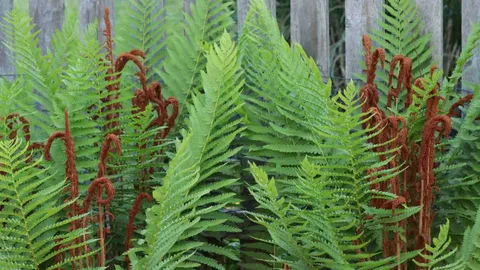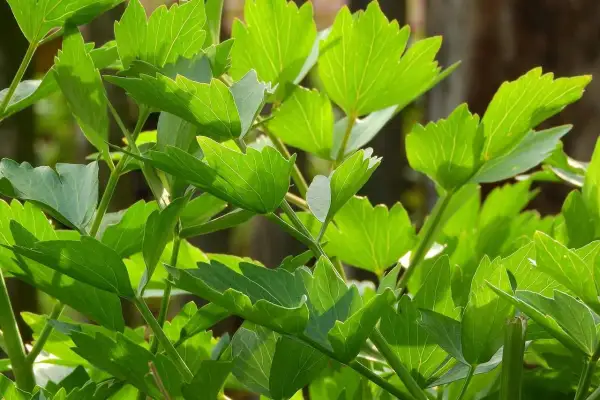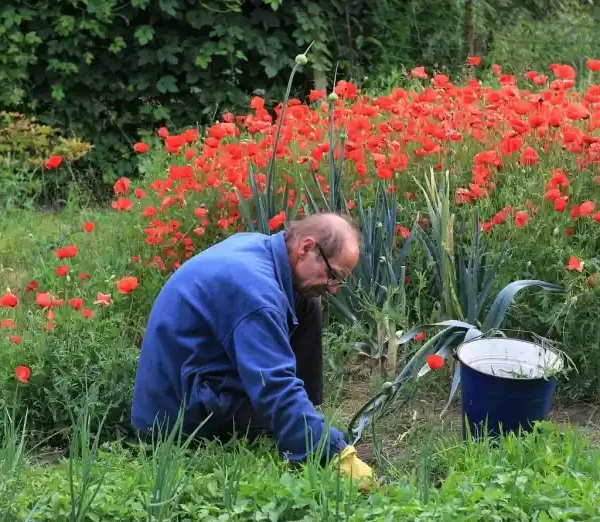Introduction to Cinnamon Fern
Botanical Overview
Cinnamon Fern, scientifically known as Osmunda cinnamomea, belongs to the Osmundaceae family. It is a deciduous fern that features two types of fronds: sterile green fronds and fertile, cinnamon-colored fronds. The fertile fronds emerge in the spring and give the fern its common name.
Natural Habitat
Cinnamon Ferns are native to North America and thrive in moist, shaded environments. They are often found in wetlands, along streams, and in shaded forest understories. Their natural habitat provides a clue to their preferred growing conditions in cultivation.

Benefits of Growing Cinnamon Fern
Ecological Benefits
Cinnamon Ferns play a significant role in their natural ecosystems. They help stabilize soil, prevent erosion, and provide habitat for various wildlife. Their presence in wetlands contributes to water purification and biodiversity.
Ornamental and Functional Uses
In garden settings, Cinnamon Ferns are valued for their aesthetic appeal. Their tall, arching fronds create a dramatic effect in shaded garden beds, woodland gardens, and near water features. They also serve as excellent companions to other shade-loving plants.
Planting Cinnamon Fern
Site Selection
Selecting the right site is crucial for the successful growth of Cinnamon Ferns. Consider the following factors:
- Light Requirements: Cinnamon Ferns prefer partial to full shade. They thrive in dappled sunlight and can tolerate deep shade.
- Soil Conditions: These ferns require moist, well-drained soil that is rich in organic matter. They prefer slightly acidic to neutral pH levels (5.0 to 7.0).
Preparing the Soil
Before planting, prepare the soil by incorporating organic matter such as compost or peat moss. This will enhance soil structure, improve drainage, and provide essential nutrients.
Planting Steps
- Digging Holes: Dig planting holes that are twice as wide and just as deep as the fern’s root ball.
- Spacing: Space the ferns 2 to 3 feet apart to allow for growth and air circulation.
- Planting: Place the fern in the hole, ensuring the crown (where the fronds meet the roots) is level with the soil surface. Backfill with soil, gently firming it around the roots.
- Watering: Water thoroughly after planting to settle the soil and eliminate air pockets.
Caring for Cinnamon Fern
Watering
Cinnamon Ferns require consistently moist soil. Water them regularly, especially during dry periods, to keep the soil evenly moist but not waterlogged. Mulching around the base of the ferns can help retain soil moisture and reduce the need for frequent watering.
Fertilizing
Cinnamon Ferns generally do not require frequent fertilization if planted in rich, organic soil. However, you can apply a balanced, slow-release fertilizer in early spring if the soil is poor or lacks nutrients.
Pruning and Maintenance
Cinnamon Ferns are low-maintenance plants. In late fall or early spring, remove any dead or damaged fronds to encourage new growth. This also helps prevent disease and pest problems by improving air circulation.
Pest and Disease Management
Cinnamon Ferns are relatively resistant to pests and diseases but can occasionally be affected by:
- Slugs and Snails: These pests may feed on the fronds, causing damage. Handpick them or use organic slug repellents to protect your ferns.
- Fungal Diseases: Ensure good air circulation and avoid overhead watering to prevent fungal issues such as leaf spot or rust. If necessary, treat with an appropriate fungicide.
Propagating Cinnamon Fern
Division
The most common method of propagating Cinnamon Ferns is through division. This involves separating a mature fern into smaller sections and replanting them.
- Timing: Divide ferns in early spring before new growth begins or in early fall.
- Digging Up: Carefully dig up the entire fern clump, being mindful of the root system.
- Separating: Use a sharp knife or spade to divide the clump into smaller sections, each with several fronds and a portion of the root system.
- Replanting: Replant the divisions in prepared soil, following the planting steps outlined earlier.
Spore Propagation
Cinnamon Ferns can also be propagated from spores, though this method is more time-consuming and requires specific conditions.
- Collecting Spores: Spores can be collected from the fertile fronds in late summer or early fall.
- Sowing: Sow the spores on a sterile growing medium, such as a mixture of peat and sand.
- Germination: Keep the medium consistently moist and place it in a warm, shaded area. Spores may take several weeks to germinate.
- Transplanting: Once the young ferns have developed several fronds, they can be transplanted into individual pots or directly into the garden.
Conclusion
Cinnamon Fern (Osmunda cinnamomea) is a versatile and attractive plant that can enhance the beauty and ecological health of your garden. By understanding its growing requirements and providing the appropriate care, you can enjoy the lush, elegant fronds of this remarkable fern for years to come.
- Lip Filler London – Lip Augmentation & Natural Lip Enhancement - December 16, 2025
- Tennessee’s THC Beverage Market - June 5, 2025
- Top THC Infused Seltzers in Delaware - June 5, 2025




